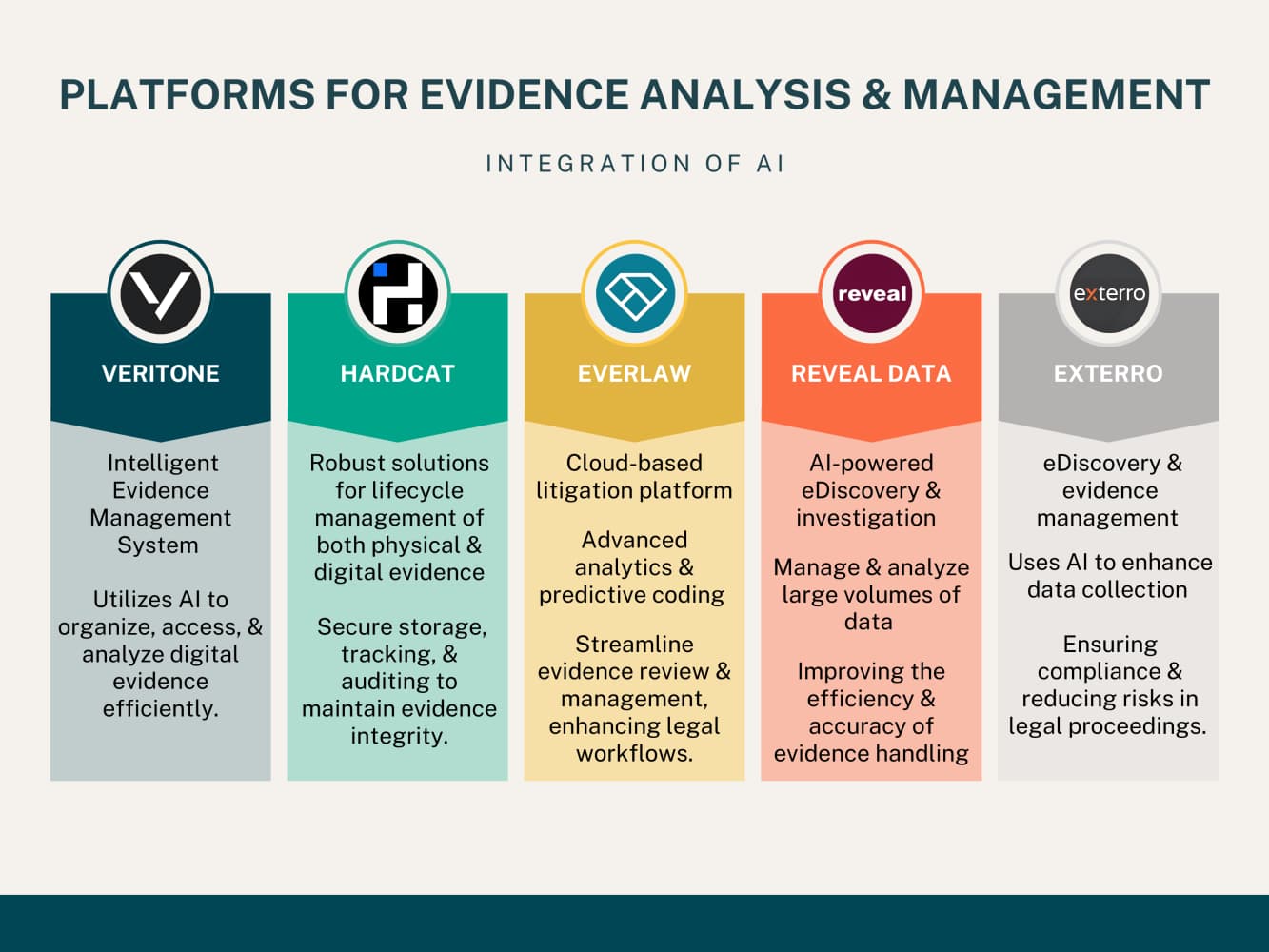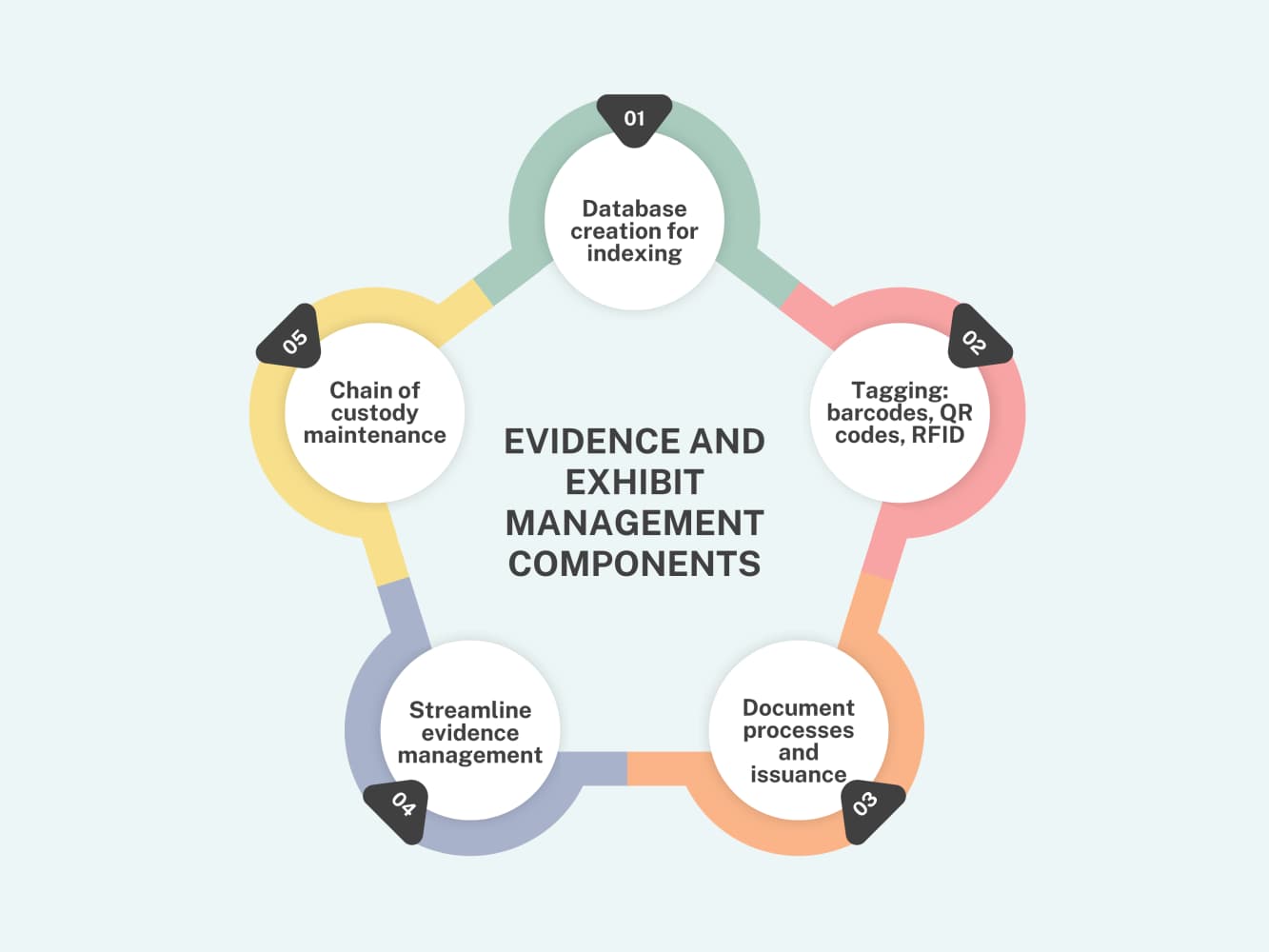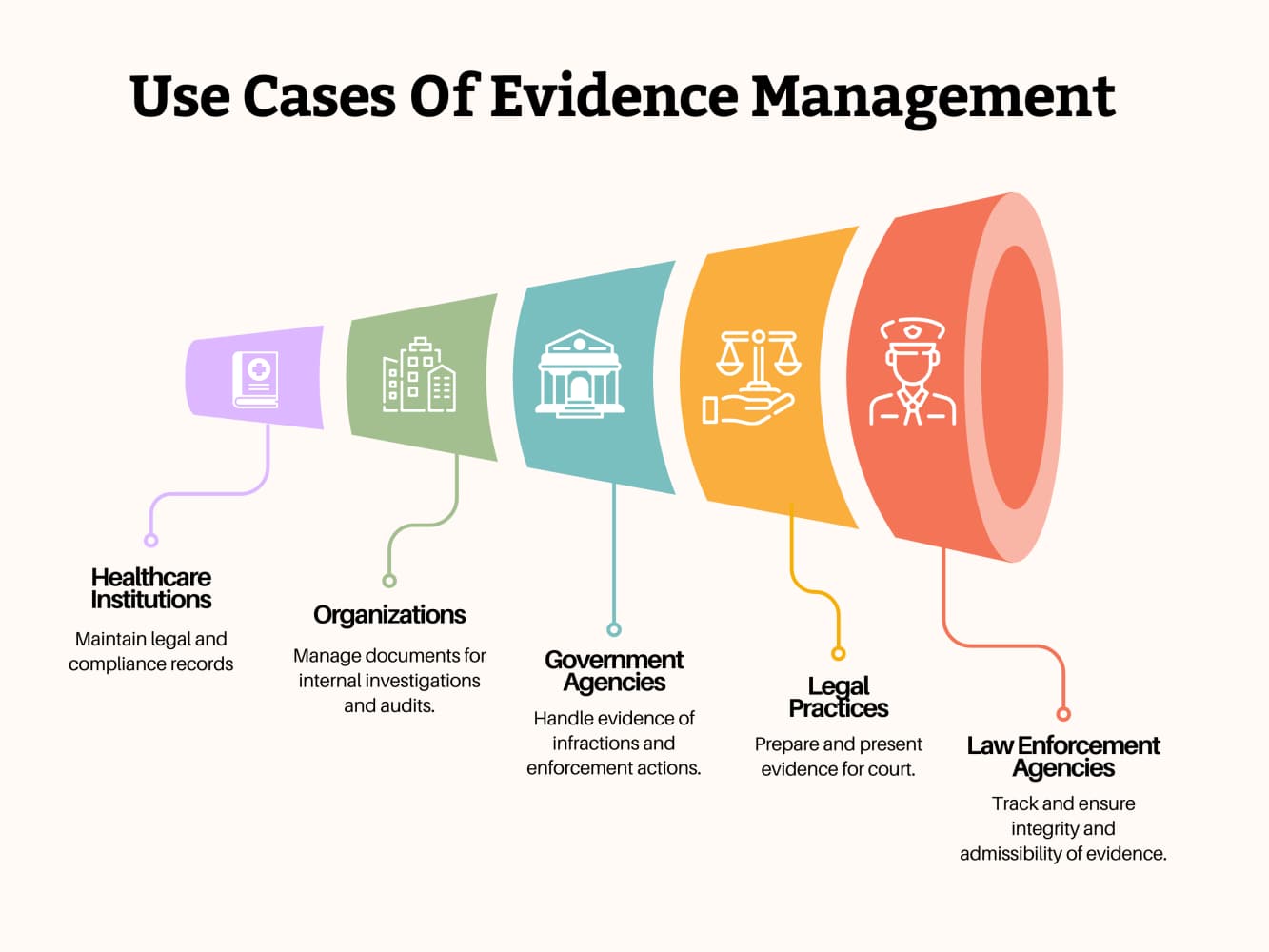The legal field is changing a lot with the rise of Artificial Intelligence (AI) technology. AI has the potential to completely change how litigation works, making it more efficient and streamlined. In this article, we will focus specifically on how AI is used in analyzing and managing evidence during litigation.
Explore and Master Your Legal Agreements and Contract Management with AI at Legaliser.com.
Why Evidence Analysis Matters
Analyzing evidence is really important in any legal case. It helps lawyers build strong arguments and make informed decisions. But traditionally, going through lots of evidence has been a slow and labor-intensive process. That’s where AI comes in.
How AI Can Help with Evidence Analysis
AI has brought some exciting innovations to the world of evidence analysis:
Natural Language Processing (NLP): This technology allows computers to understand and interpret human language. When it comes to evidence analysis, NLP can quickly go through documents and contracts, extracting important information and finding patterns. For example, AI-powered tools can analyze contracts to find specific clauses or terms that are crucial to a case.
Computer Vision: This refers to the ability of computers to “see” and understand visual content like images and videos. In court cases, sometimes pictures or videos are presented as evidence. With AI algorithms, these visual pieces can be analyzed accurately to identify objects, faces, or activities that may be relevant to the case.
The Importance of Evidence Management
Aside from analyzing evidence, it’s also important to manage it properly. With more and more digital data being used in litigation, having effective systems for organizing and retrieving evidence is crucial. This is another area where AI can make a big difference.
Professional Platforms for Evidence Analysis and Management
The integration of AI into evidence analysis and management is exemplified by several leading platforms that offer comprehensive solutions.

Veritone: Utilizes artificial intelligence to manage digital evidence efficiently, improving organization, accessibility, and analytical capabilities.
Hardcat: Provides end-to-end management solutions for physical and digital evidence, focusing on secure storage, detailed tracking, and integrity assurance.
Everlaw: Cloud-based solution with sophisticated analytics and predictive algorithms to streamline the evidence review process and enhance legal case management.
Reveal Data: Offers AI-powered tools for eDiscovery and investigations, facilitating the efficient handling and analysis of large volumes of data, thereby increasing accuracy.
Exterro: Employs AI to enhance eDiscovery and evidence management processes, focusing on improving data collection, ensuring compliance, and minimizing legal risks.
These platforms demonstrate the transformative impact of AI on evidence management, offering legal professionals advanced tools to enhance accuracy, security, and efficiency in handling legal evidence.
How AI Can Help with Evidence Management
Here are some ways in which AI can improve evidence management:
Automated organization: Instead of manually categorizing and labeling documents, AI systems can do this automatically based on their content.
Predictive coding: Machine Learning algorithms can be used to predict which documents are most relevant to a case. This can save a lot of time and effort compared to reviewing everything manually.
Blockchain technology: Blockchain is a type of digital ledger that is decentralized and transparent. It can be used to create secure and tamper-proof records of evidence, ensuring their integrity.
The Potential of AI in Litigation
In this article, we will explore these key innovations in more detail and look at how they are being used in real-world cases. We will also discuss the ethical and legal issues that come with using AI in the legal field.
Through case studies, we will examine real-world implementations of AI in litigation, showcasing their impact on case outcomes. Finally, we will discuss the future prospects of AI in transforming litigation processes and the benefits and challenges that lie ahead.
AI in Evidence Analysis
AI is transforming the way evidences are analyzed in legal cases, offering a more efficient and effective approach. With the potential to significantly reduce time and effort, here’s how AI technology is revolutionizing evidence analysis:
Benefits of AI in Evidence Analysis – Speeding up Review Process
Use of Natural Language Processing (NLP): NLP enables the efficient review of documents and contracts by automatically extracting relevant information from unstructured text. For example, software like Kira Systems uses NLP to identify key clauses and data points within contracts, streamlining the review process and ensuring critical information is not overlooked.
NLP algorithms analyze the text to identify patterns, keywords, and context, allowing for faster document review.
By automating the extraction of information, NLP eliminates the need for manual review and reduces human error.
NLP can also categorize documents based on their content, making it easier to organize and prioritize large volumes of information.
Application of Computer Vision: AI-powered computer vision technology is being utilized for accurate analysis of images and videos in court proceedings.
For instance, platforms like Everlaw leverage computer vision algorithms to assist legal teams in reviewing visual evidence by identifying objects, faces, text, or activities within multimedia files.
Computer vision algorithms can detect subtle details in images or videos that may be missed by human reviewers.
This technology enables faster and more thorough analysis of visual evidence, saving time and resources in litigation processes.
Computer vision algorithms can also be trained to recognize specific patterns or objects relevant to a case, improving the accuracy and efficiency of evidence analysis.
By leveraging these innovations, legal professionals can enhance the speed and accuracy of evidence analysis, ultimately improving case outcomes and overall efficiency in litigation processes.
Streamline Your Legal Agreements and Contract Management with AI at Legaliser.com.
AI in Evidence Management
AI is revolutionizing evidence management as the volume of digital data in legal cases continues to surge. This growth necessitates the use of AI to streamline evidence management processes, making it a crucial component.

The image above highlights the essential components of evidence and exhibit management. These include:
Efficient Data Cataloging: Creation of a database for indexing and identifying items.
Advanced Identification Technologies: Tagging using barcoding, QR codes, and Radio-frequency Identification (RFID) tags.
Procedural Documentation: Document processes, issuance and receipt of items, and disposal procedures.
Streamlined Management Systems: Automate the management of evidence, improve tracking and retrieval, and enhance security and accountability.
Custody Tracking and Secure Storage: Chain of custody, safe and secure storage of seized and/or gathered evidence, and timely disposal in accordance with the law.
Let’s discover how AI is revolutionizing evidence management with cutting-edge technologies. Here are some key ways that AI is transforming evidence management.
Leveraging Machine Learning Algorithms for Predictive Coding and Document Prioritization
Machine learning algorithms have emerged as powerful tools for predictive coding by automatically ranking relevant documents for review. This eliminates the need for manual organization and significantly enhances case preparation and strategy development efficiency.
For instance, platforms like Catalyst Insight and Relativity employ machine learning algorithms to effectively sort and prioritize documents based on their relevance to the case. These tools expedite the review process while simultaneously improving document prioritization accuracy.
Implementing Blockchain Technology for Ensuring Tamper-proof Integrity of Evidence Records
The implementation of blockchain technology provides a secure and unalterable platform for managing evidence records, ensuring their integrity and authenticity throughout the legal process. By leveraging blockchain, lawyers can establish a trustworthy chain of custody for digital evidence, thereby minimizing the risk of tampering or unauthorized changes.
For example, companies like Thomson Reuter’s Case Center (formerly CaseLines) utilize blockchain technology to build a secure and transparent platform for evidence management, creating an immutable record of evidence custody and access. This innovation bolsters trust in the integrity of digital evidence by addressing concerns regarding data tampering and unauthorized modifications.
These innovative applications of AI in evidence management highlight how technology can significantly enhance legal processes. As AI continues to advance, these developments are expected to further optimize evidence management, providing lawyers with superior methods to handle digital evidence.
The seamless integration of machine learning algorithms and blockchain technology into evidence management systems represents a significant stride towards overcoming the challenges posed by the mounting volume of digital data in legal cases. By embracing these AI-driven innovations, lawyers can confidently navigate complex evidentiary landscapes with greater accuracy, ultimately leading to improved case outcomes.
To delve deeper into this topic you may consider reading the following publications about the impact of chain of custody in evidence documentation and blockchain-based evidence management in digital forensics.
1. Badiye A. et al. highlight the importance of maintaining a robust chain of custody to ensure the authenticity and admissibility of digital evidence. AI tools must adhere to these standards to enhance the reliability and trustworthiness of AI-driven legal processes. 2. Kayikci S. et al. discuss the integration of blockchain and machine learning to enhance data security and transparency in various applications. They highlight the potential of these technologies to provide secure, transparent methods for recording transactions and maintaining data integrity. 3. Kim D. et al. propose a two-level blockchain system to enhance the management of digital crime evidence. By separating frequently modified data from immutable data, this approach ensures both efficiency and security in handling large volumes of digital evidence. 4. Meng L. et al. introduce LEChain, a blockchain-based scheme for managing lawful evidence. This approach enhances the integrity and security of digital evidence.
Ethical and Legal Considerations
As AI transforms evidence analysis in litigation, addressing ethical and legal challenges is crucial. Key concerns include privacy infringement, algorithmic bias, and the need for regulatory frameworks. Legal professionals must ensure AI aligns with ethical standards and maintain oversight. For a detailed discussion, refer to our previous article.
The next section will explore case studies showcasing real-world implementations of AI in evidence analysis and management, providing insights into the practical impact of AI in litigation.
Case Studies
Baker Tilly’s Utilization of AI E-Discovery Technology
Baker Tilly successfully utilized AI e-discovery technology to streamline the review process and reduce the time and cost of litigation.
In a complex litigation case involving a large volume of digital evidence, Baker Tilly implemented AI e-discovery technology to enhance their evidence analysis and management process. By utilizing advanced algorithms and machine learning, the AI system efficiently scanned through thousands of documents, emails, and other digital files, significantly reducing the time required for manual review.
The AI e-discovery technology was capable of identifying patterns and connections within the data that might have been overlooked by human reviewers. It automatically categorized documents based on relevance and potential significance to the case, allowing legal professionals to focus their attention on the most crucial pieces of evidence.
By automating time-consuming tasks such as data collection, processing, and document review, Baker Tilly was able to streamline the entire litigation process. This not only saved valuable time but also resulted in cost savings for their clients. The use of AI e-discovery technology exemplified how leveraging artificial intelligence can revolutionize evidence analysis and management in litigation.

AI in Jury Trials
The use of AI in jury trials has shown promising results in analyzing large volumes of evidence, identifying patterns, and providing valuable insights to support legal arguments.
In recent years, AI technologies have been introduced to assist legal professionals during jury trials. These AI systems have the capability to analyze vast amounts of evidence quickly and accurately. By applying natural language processing and machine learning algorithms, they can extract relevant information from documents, transcripts, audio recordings, and video footage.
One significant benefit of using AI in jury trials is its ability to identify patterns and relationships within the evidence. The AI system can detect connections that may not be immediately apparent to human observers, helping legal teams build stronger arguments and present more persuasive cases.
By leveraging AI technology, legal professionals can efficiently sift through complex evidence and identify key information that supports their legal strategy. This not only saves time but also enhances the accuracy and comprehensiveness of the analysis. By presenting a more compelling case, attorneys have a higher chance of achieving favorable outcomes for their clients.
The successful use of AI in jury trials demonstrates the transformative potential of artificial intelligence in the legal field. By augmenting human capabilities with advanced analytical tools, AI systems contribute to more efficient and effective litigation processes.
AI-driven evidence analysis and management have the potential to revolutionize the way litigation is conducted, offering more efficient and accurate methods for handling complex legal cases. Real-world implementations of AI in both evidence analysis and management showcase their impact on case outcomes.
Notably, Baker Tilly’s and Veritone’s successful deployment of AI e-discovery technology for digital evidence collection and analysis serves as a examples of the practical application of AI in enhancing litigation processes.
Transform Your Legal Agreements and Contract Management with AI at Legaliser.com.
Conclusion on Transforming Litigation with AI
The role of AI in evidence analysis and management in litigation is transformative. AI technology has completely changed how legal professionals handle complex cases, providing more efficient and accurate ways to manage evidence and make informed decisions.
AI has significant implications for the entire legal profession, leading to:
- Streamlined processes
- Enhanced case strategies
- Improved decision-making
As AI continues to evolve, its integration into the entire litigation process, from case assessment to trial preparation, will become even more widespread.
Legal professionals should embrace the opportunities presented by AI while maintaining ethical standards and ensuring human oversight. Striking a balance between utilizing AI’s capabilities and upholding ethical integrity will be crucial in shaping the future of litigation processes.
Although there are immense potential benefits of using AI in litigation, it is essential to approach them with an understanding of the challenges and responsibilities that come with this technological advancement.
